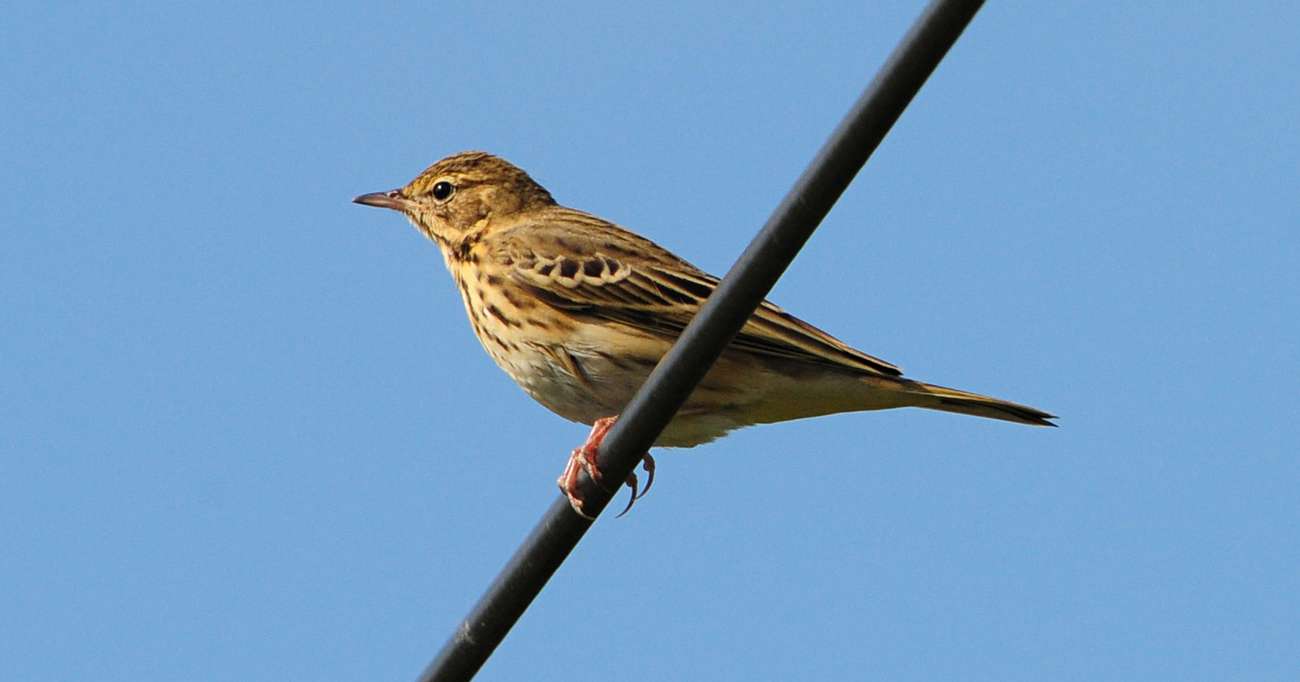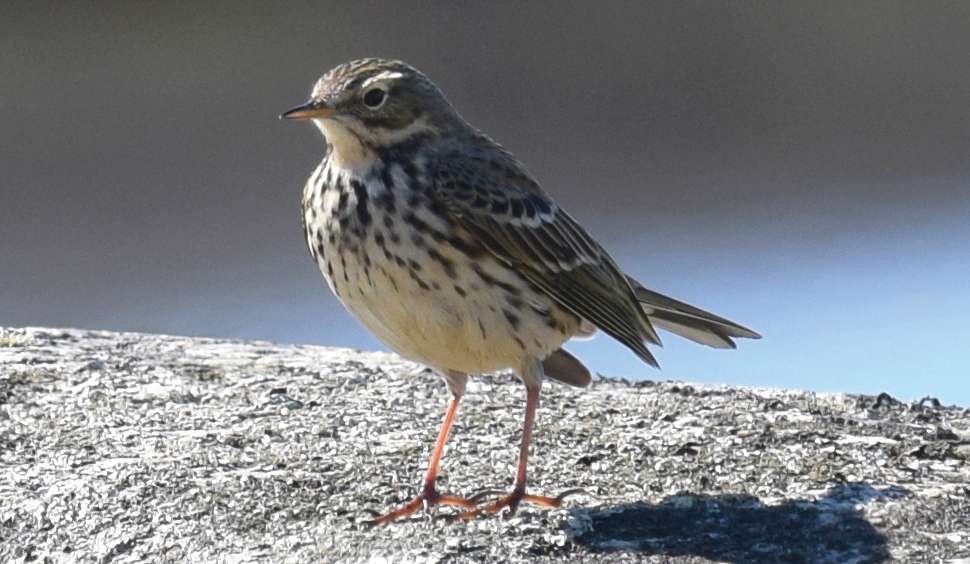
Meadow Pipit (Anthus pratensis)
Heads up! The troops are on their way and will soon be passing by.
Those in the advance guard this month often travel solo or in pairs. But reinforcements are already on their way and we can expect a steady trickle of the cavalry over the next few weeks in the Surrey Hills.
That is the easiest place to encounter them locally at this time of the year in what I call the ‘March Of The Mipits’ season.
They’d probably get away without being seen on their tour from southern Europe, or even Morocco, if they were silent. But as they patrol onward their high-pitched calls pierce the air like an army of mice. And this usually gives them away as they fly by in squeaky bounds.
‘Mipits’ are birding terminology for Meadow Pipits. When you see one it is quicker if you call out ‘Mipit’ rather than try to utter the full name. By the time you did that, anyone with you could have missed them.
Their increasingly scarcer congeners in Surrey receive similar verbal treatment. Read ‘Tripits’ for Tree Pipits, Ripits for Rock Pipits, and even ‘Wipits’ for Water Pipits. If this catches on we could have Lowls, Towls, and Bowls.
The Meadow Pipit bred locally last century but sadly gradually disappeared along with the meadows.
Other habitat in the fields around Cranleigh for more northerly populations during the winter has also been vanishing under the bulldozer. Favoured sights until just recently includes farmland off Amlets Lane, Knowle Lane, Elmbridge Road and Horsham Road. As we know, homes now stand there instead. Or are about to.
Winter roosts on our local heathland have dropped from a peak of over 150 on 13 February 2001 at the aptly named Winterfold Heath. Today a flock of 20 there would be notable.
So how do you count a small species that tends to forage in long grass and last season’s flattened bracken?
You have a ‘pish’. I have found Meadow Pipits often respond well to this. ‘Pishing’ is making the sound of ‘pish’ through your clenched teeth. Do it right and the birds react by swirling up from their hiding places and sky dancing in circles around you, calling back excitedly.

Meadow Pipit (Anthus pratensis)
The noise makes them curious to find out the cause. Maybe they think it is an intruding owl or a bird in distress. But the technique, very effective with many species in North America, should only be used sparingly and during bird surveys. Never in breeding areas where any sudden flight from cover reveals nest locations to watching predators such as Carrion Crows.
Also it might be best not to pish when other humans are around. Most people will of course think you are nuts if you do.
But I was imitating a warbler once, without success, only to be greeted by an enthusiastic chap with binoculars coming towards me from the other side of a small spinney.
He announced he’d just been listening to ‘a very interesting bird’ although he’d not managed to see it. What he’d been hearing turned out to be me. Doh!
Anyone who goes summer walking in the wilder areas – Dartmoor, Exmoor, the north of England, Wales, or Scotland – will likely be familiar with ‘these little brown jobs’ (LBJs).
Breeding season Meadow Pipits arise from the ground to give a ‘sit-sit-sit’ type of song before floating down vertically like the Hawker Harrier jets once gracing our local Dunsfold Airfield.
Ironically this site is another Mipit haven destined to lose them as it defies local objection to become a new village for thousands of new inhabitants.
In the early autumn the March of the Mipits will begin again as they head south. Better views are then possible as adults and juveniles rest on telephone wires or fences in the fields. Swallows and House Martins are often with them.
The complex plumage pattern is not a boring brown as some suppose. It varies depending on age and season but think of a mini Song Thrush roughly the size of a Robin.
Then look for streaky rather than spotted black markings on the breast and flanks, a small, thin bill, and grey-brown upperparts with black ‘tyre marks’ down the back.
Smart camouflage increasingly needed by these little threatened soldiers.
Twitter – @Crane_Spotter
Click here to see all of Robin Stride’s previous Crane Spotters.











